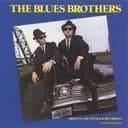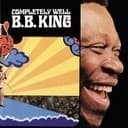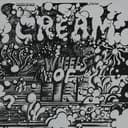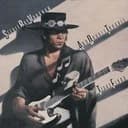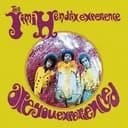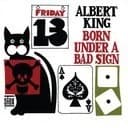E♭ blues holds a privileged position in jazz history due to the prevalence of E♭ instruments in horn sections and big bands. When Charlie Parker, the father of bebop, played his alto saxophone (an E♭ instrument), he often improvised using blues scales in what sounded to him like concert pitch but translated to E♭ for listeners. This historical connection makes E♭ blues particularly idiomatic for saxophone, creating a direct link between the scale's theoretical structure and the physical layout of the instrument's keys. The "blue note"—the ♭5 (A natural in E♭ blues)—represents the same pitch ambiguity found in all blues scales, but in E♭ it takes on special significance for horn players who can achieve vocal-like pitch bending through embouchure control and alternate fingerings. This microtonal expressiveness, moving fluidly between A♭ (the perfect 4th) and B♭ (the perfect 5th), creates the emotional depth that distinguishes jazz and blues improvisation from purely technical playing. The tritone tension between E♭ (root) and A (♭5) adds harmonic complexity that resolves beautifully in both traditional blues contexts and modern jazz applications.
E♭ Blues in Jazz and Horn Music
The E♭ Blues Scale dominates jazz improvisation, particularly in the bebop and hard bop traditions pioneered by Charlie Parker, Cannonball Adderley, and Phil Woods. For alto saxophonists, E♭ blues forms the foundation of countless licks, patterns, and melodic ideas that define the jazz language. When playing over a blues progression in E♭ (E♭7-A♭7-E♭7-B♭7-A♭7-E♭7), horn players can use the blues scale throughout all chord changes, creating unified melodic statements that transcend individual harmonic moments. This scale works equally well for brass players—trumpet legends like Dizzy Gillespie and Clifford Brown built extensive vocabularies around blues scales in multiple keys, with E♭ being particularly comfortable for B♭ trumpet players navigating concert pitch. The scale's six notes provide enough variety for creative improvisation while maintaining the simplicity needed for rapid-fire bebop lines. Combine E♭ blues with the E♭ Minor Pentatonic Scale or E♭ Natural Minor to expand your melodic palette, alternating between the raw blues sound and more diatonic minor tonalities for sophisticated jazz phrasing.
Transposition for Different Instruments
Understanding E♭ blues is essential for ensemble playing and transposition across different instrument families. When an E♭ alto saxophonist plays what they see as "C blues" on their music stand, they're producing concert E♭ blues—this transposition relationship is fundamental to big band and jazz combo arrangements. B♭ instruments (tenor saxophone, trumpet, clarinet) must think in F♯ blues to match concert E♭ blues, while concert-pitch instruments (piano, guitar, bass, flute) play E♭ blues as written. This key's prevalence in jazz standards means that rhythm section players frequently encounter E♭ blues progressions in rehearsal and performance settings. Pianists and guitarists should internalize E♭ blues patterns across the entire instrument range, as comping and soloing over horn-led tunes often requires quick recall of blues vocabulary in this key. The scale's finger-friendly layout on saxophone (natural finger positions for most notes) doesn't translate directly to piano or guitar, where E♭ requires navigating multiple black keys—this challenge makes thorough practice essential for non-horn players working in jazz contexts.
Blues Scale Applications in Soul and R&B
Beyond jazz, the E♭ Blues Scale plays a crucial role in soul, R&B, and funk horn arrangements that defined the Motown, Stax, and Philadelphia International sounds. Tower of Power's saxophone section, Earth, Wind & Fire's horn charts, and James Brown's band arrangements all drew heavily on blues scales in E♭ and other keys to create punchy, rhythmic horn lines that complemented vocal melodies. The scale's ability to work over dominant seventh chord progressions makes it perfect for funk vamps and soul-jazz grooves where a single chord might extend for several bars. When writing or improvising horn parts, emphasize the blue note (A) as a passing tone or grace note to add soulful inflection to your phrases. Contemporary R&B and neo-soul artists continue this tradition—horn sections in modern productions often use blues scale patterns to add organic, human texture to otherwise electronic arrangements. The E♭ blues scale's emotional expressiveness translates directly to vocal improvisation as well, with singers using blue note inflections to add depth and authenticity to melismatic phrases and ad-libs.
Practice Strategies and Next Steps
To master the E♭ Blues Scale, begin by practicing it slowly through multiple octaves, paying special attention to smooth voice leading between the ♭5 (A) and its surrounding notes (A♭ and B♭). Horn players should explore different articulations—legato for smooth jazz lines, staccato for funky rhythmic patterns, and mixed articulations for bebop phrasing. Piano and guitar players benefit from learning the scale in multiple positions or inversions across the keyboard or fretboard, ensuring fluency regardless of register. Practice improvising over a 12-bar blues in E♭, using only the blues scale at first, then gradually incorporating chord tones, chromatic approaches, and rhythmic variations. Listen extensively to recordings featuring E♭ blues—Charlie Parker's "Now's The Time," Cannonball Adderley's work with Miles Davis, and modern players like Kenny Garrett—transcribing short phrases to internalize authentic jazz-blues vocabulary. As you advance, explore how the blues scale relates to E♭ Natural Minor and other modal options, developing the flexibility to move seamlessly between blues-based and diatonic approaches in your improvisation. Create a free account at PianoOwl to access interactive scale exercises, backing tracks in E♭, and personalized practice routines that will accelerate your mastery of blues scales across all keys.
